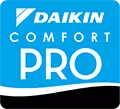Upgrading your furnace is a significant decision for any homeowner in Oshtemo. A reliable furnace is essential for maintaining a warm and comfortable home, especially during the cold winter months. Understanding when it’s time to replace your furnace and how to choose the right one can prevent unexpected breakdowns and improve energy efficiency.
Signs It's Time to Replace Your Furnace
Several indicators can signal that it’s time to replace your furnace. Recognizing these signs early can save you from unexpected breakdowns and higher energy bills.
- Frequent Repairs: If your furnace needs constant repairs, it may be more cost-effective to replace it. Regular breakdowns indicate that the system is failing.
- Rising Energy Bills: An older furnace can become less efficient over time, leading to increased energy costs. Rising bills without a change in usage habits is a clear sign your furnace might be struggling to function optimally.
- Uneven Heating: If certain rooms in your home are warmer or colder than others, it could be a sign that your furnace isn’t distributing heat evenly. This often indicates that the system is outdated or malfunctioning.
- Noisy Operation: Unusual noises like banging, rattling, or squealing are signs that something is wrong with your furnace. These noises can result from worn-out parts or mechanical issues.
- Age of the Furnace: Furnaces typically last about 15-20 years. If your system is approaching or has exceeded this age range, it’s time to consider a replacement.
These signs affect your heating system by reducing efficiency and reliability, leading to a less comfortable home environment and higher operational costs. Replacing an old or malfunctioning furnace can improve energy efficiency and provide more consistent heating.
Choosing the Right Furnace for Your Home
Selecting the right furnace is crucial to ensure effective heating and energy efficiency. Several factors should be considered when choosing a new furnace for your Oshtemo home.
- Size of Your Home: The furnace size must match your home’s heating needs. A furnace that is too small won’t heat your home sufficiently, while an oversized furnace can cycle on and off too frequently, reducing efficiency.
- Energy Efficiency: Look for furnaces with high Annual Fuel Utilization Efficiency (AFUE) ratings. Higher AFUE ratings mean better energy efficiency, which can reduce your heating bills.
- Fuel Source: Furnaces can run on different types of fuel, such as natural gas, propane, oil, or electricity. Your choice will depend on availability, cost, and environmental considerations.
- Budget: Consider the initial cost of the furnace and the long-term operating costs. While high-efficiency furnaces may have a higher upfront cost, they can save you money in the long run through reduced energy bills.
- Features: Modern furnaces come with various features like variable-speed blowers, two-stage heating, and smart thermostats. These features can enhance comfort and efficiency but may also affect the overall cost.
Understanding the differences between furnace types is also important. Gas furnaces are common and efficient for areas with natural gas access. Electric furnaces are less efficient but can be a good option where gas is not available. Oil furnaces offer strong heat output but can be costly to operate. Propane furnaces are an alternative to natural gas but may require regular fuel delivery.
By considering these factors, you can choose a furnace that suits your home’s needs and ensures a comfortable living environment.
The Furnace Installation Process by Our Professionals
Our professionals follow a thorough installation process to ensure your new furnace operates efficiently and effectively. Here’s what you can expect during the installation:
1. Assessment and Preparation: Our technicians begin by assessing your home’s heating needs and the space where the furnace will be installed. This step involves taking measurements and ensuring that the chosen location meets all safety requirements.
2. Removal of Old Furnace: If there is an old furnace in place, our team will carefully disconnect and remove it. This process includes disposing of the old unit in an environmentally responsible manner.
3. Installation of the New Furnace: Our professionals will then install the new furnace. This involves connecting it to your home’s ductwork, electrical system, and fuel source, ensuring all connections are secure and meet code requirements.
4. System Configuration: After installation, our technicians will configure the new furnace settings. This step includes calibrating the thermostat and adjusting airflow settings for optimal performance.
5. Testing and Quality Check: Finally, our team will perform a series of tests to ensure the furnace is working correctly. This includes checking for proper airflow, heating output, and system safety.
Homeowners can expect minimal disruption during the installation process. Our team works efficiently to complete the job as quickly as possible without sacrificing quality.
Maintaining Your New Furnace for Longevity
Regular maintenance is essential to keep your new furnace running smoothly and efficiently for years to come. Here are some tips to help you maintain your furnace:
- Change Filters Regularly: Dirty filters can restrict airflow and reduce efficiency. We recommend changing your furnace filter every 1-3 months, depending on usage and filter type.
- Keep Vents Clean and Unblocked: Ensure that all vents and registers around your home are clean and free of obstructions. This helps maintain proper airflow and prevents the system from overworking.
- Schedule Regular Inspections: Professional inspections are crucial for identifying potential issues early. Our technicians can perform detailed checks to ensure all components are functioning correctly.
It is important to have your new furnace serviced regularly by our professionals. Regular servicing helps catch smaller issues before they become major problems, ensuring your furnace operates efficiently and safely. Professional check-ups can also help extend the lifespan of your furnace, providing long-term peace of mind by keeping your home warm and comfortable throughout the year.
An efficiently running HVAC system consumes less energy, resulting in lower energy bills. With rising energy costs, this becomes a significant financial benefit for your business. Investing in regular HVAC service is an investment in cost savings over the life of your system.
Conclusion
Understanding when it’s time for a furnace upgrade, choosing the right unit, and maintaining it properly are key steps to ensuring a warm and efficient home. Recognizing the signs that your furnace needs replacing can prevent inconvenience and costly repairs. Carefully selecting a new furnace that meets your home’s needs and having it installed professionally guarantees optimal performance and energy savings.
Regular maintenance and professional check-ups can extend the life of your new furnace, ensuring it runs efficiently and reliably. A well-maintained furnace provides consistent heating, making your home a comfortable haven during cold months.
For expert furnace replacement in Oshtemo, as well as installation and maintenance services, contact Adams Heating & Cooling. Our dedicated professionals are here to ensure your home stays warm and efficient. Your comfort is our priority, so reach out to us today.










